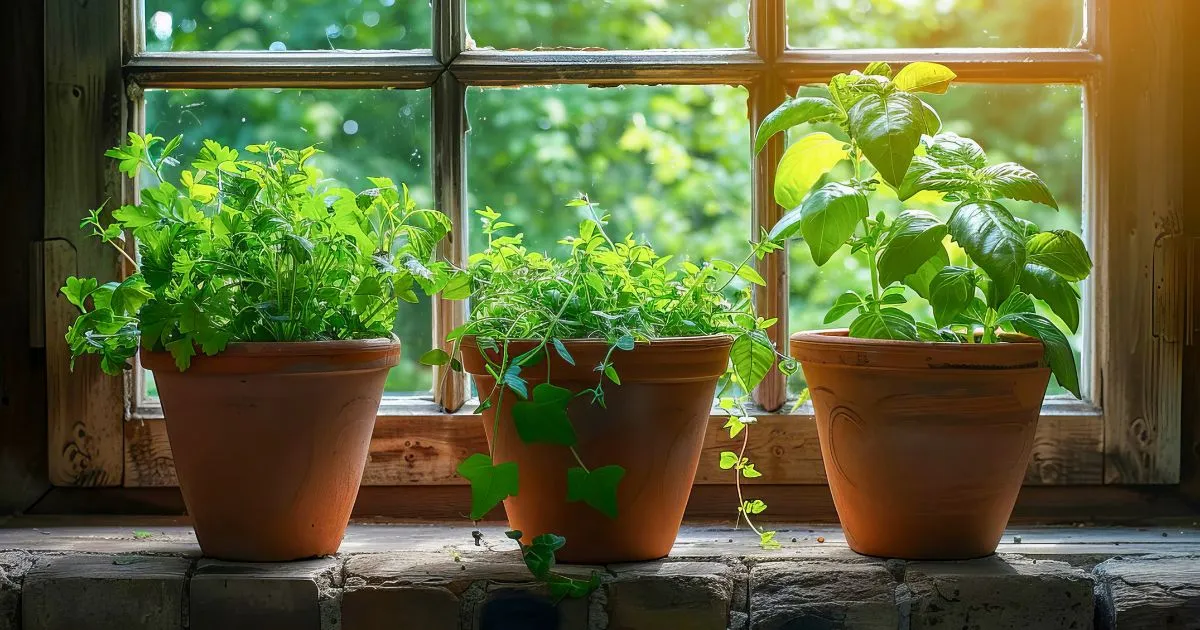Table of Contents
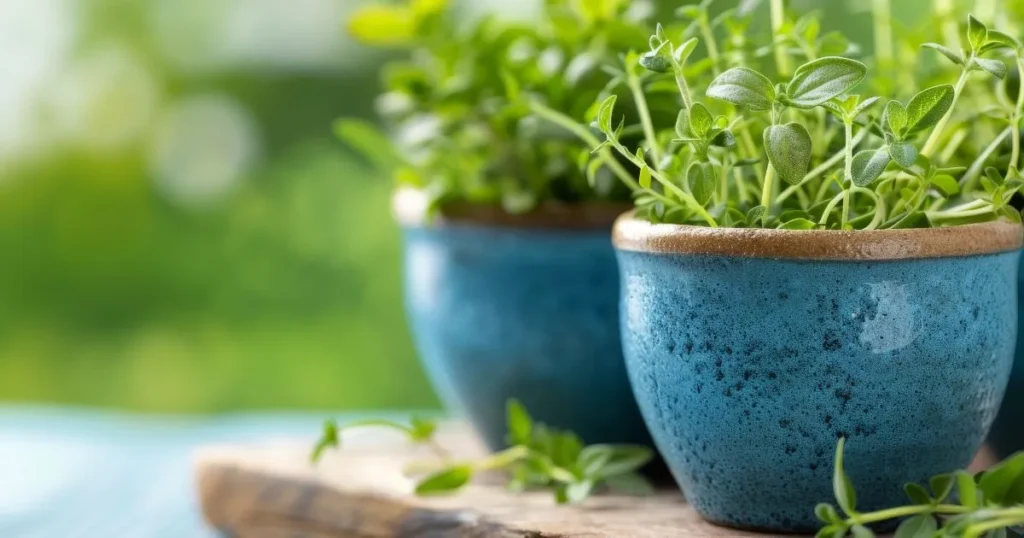
Herbs in a pot are an ideal solution for anyone looking to grow their own herbs, whether they have a large backyard or live in a small apartment. This method allows for easy access to fresh herbs for cooking and medicinal purposes, without the need for a large garden space. In this article, we will explore everything you need to know about growing herbs in pots, from selecting the right herbs to proper care and maintenance.
Why Choose Herbs in a Pot?
The Benefits of Growing Herbs in a Pot
Herbs in a pot offer numerous benefits, especially for those with limited space. Here are just a few reasons why growing herbs in pots is a great option:
- Space-saving: Pots take up less room than traditional garden beds, making them perfect for apartments or small homes.
- Portability: If you live in an area with harsh winters, you can move your potted herbs indoors to protect them from the cold.
- Control: Pots allow you to control the soil quality, drainage, and watering more easily than in-ground gardening.
- Aesthetics: A well-maintained pot of herbs can enhance the visual appeal of your home or patio.
Versatility of Herbs in a Pot
Herbs in a pot can thrive in a variety of environments, from sunny windowsills to shaded balconies. The adaptability of potted herbs makes them a perfect fit for various living situations. Whether you want to grow herbs for culinary purposes, aromatic value, or medicinal use, growing herbs in pots is a versatile and rewarding activity.
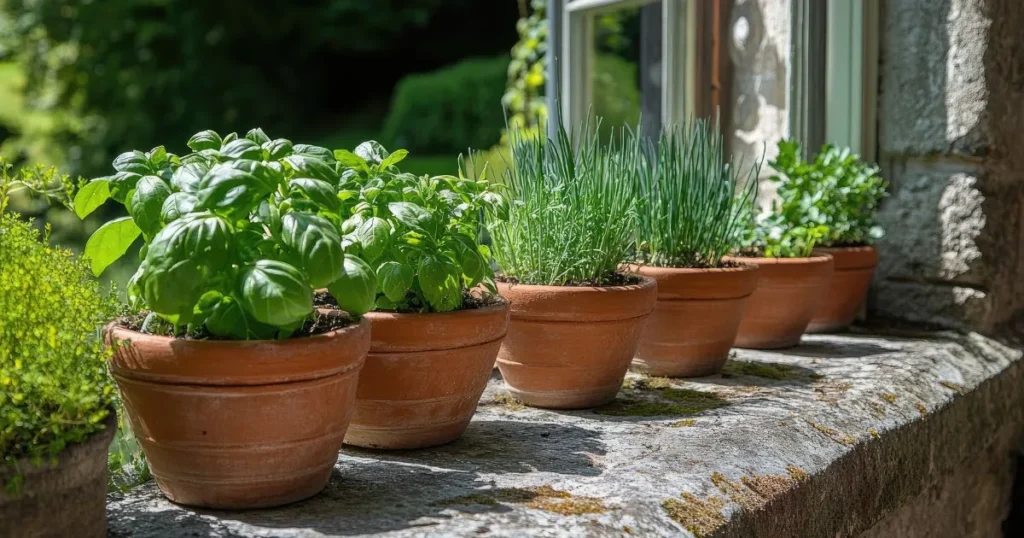
Best Herbs for Pots
Popular Culinary Herbs to Grow in a Pot
When selecting herbs to grow in a pot, it’s essential to consider both the plant’s needs and your preferences. Here are some popular culinary herbs that thrive in pots:
Basil
Basil is one of the most popular herbs for cooking, especially in Italian and Mediterranean dishes. It enjoys warm temperatures and plenty of sunlight, making it an ideal candidate for pot cultivation.
Parsley
Parsley is a hardy herb that grows well in pots. It prefers moist, well-drained soil and partial sunlight. You can use parsley to add freshness to salads, soups, and garnish dishes.
Thyme
Thyme is a low-maintenance herb that grows well in containers. Its fragrant leaves are perfect for flavoring a wide variety of dishes, including roasted meats, vegetables, and soups.
Mint
Mint grows vigorously, so it’s important to plant it in a pot to prevent it from overtaking other plants. Mint thrives in moist soil and partial sunlight, and it can be used in teas, cocktails, and savory dishes.
Medicinal Herbs for Pots
For those interested in the healing properties of herbs, there are several medicinal herbs that can also be grown in pots. Some popular options include:
Lavender
Lavender is known for its calming and therapeutic properties. It requires well-drained soil and full sunlight, making it perfect for container gardening.
Chamomile
Chamomile is often used to make soothing teas. This herb does well in pots as long as it receives plenty of sunlight and is kept in a location with good air circulation.
Echinacea
Echinacea, often used to boost immunity, can be grown in pots. It prefers a sunny location and well-drained soil.
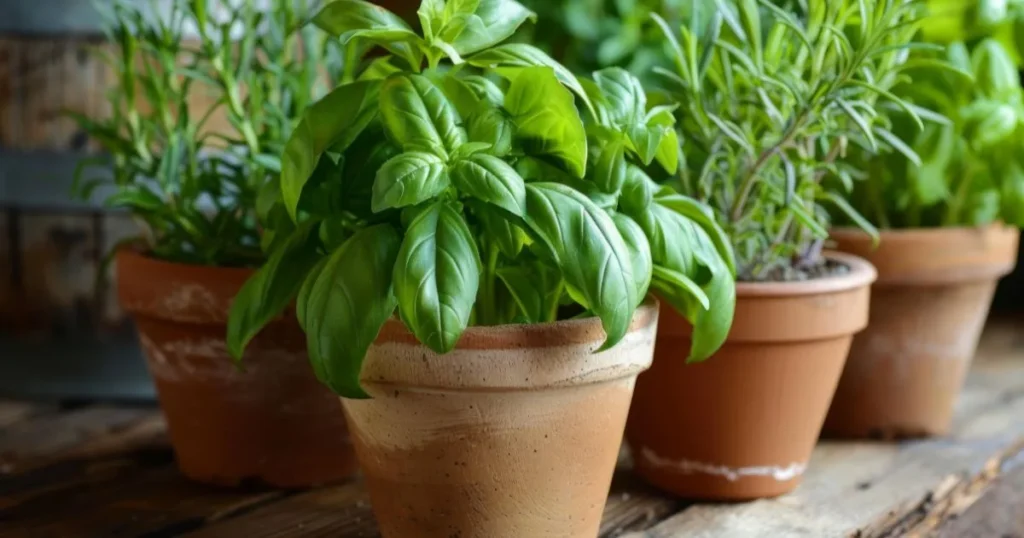
Choosing the Right Pot for Herbs
Size and Material of the Pot
Choosing the right pot for your herbs is crucial to their health. Here are some considerations to keep in mind:
- Size: Herbs need enough room for their roots to grow. A pot that is too small will restrict root growth and stunt the plant’s development. A pot that is too large, however, may retain excess water, leading to root rot.
- Material: Pots come in various materials, including plastic, ceramic, and clay. Ceramic and clay pots are aesthetically pleasing but may dry out faster than plastic pots. Plastic pots are lightweight and retain moisture better.
Drainage
Good drainage is essential for potted herbs. Ensure your pot has drainage holes to prevent water from accumulating at the bottom, which can lead to root rot. You can also add a layer of gravel at the bottom of the pot to improve drainage.
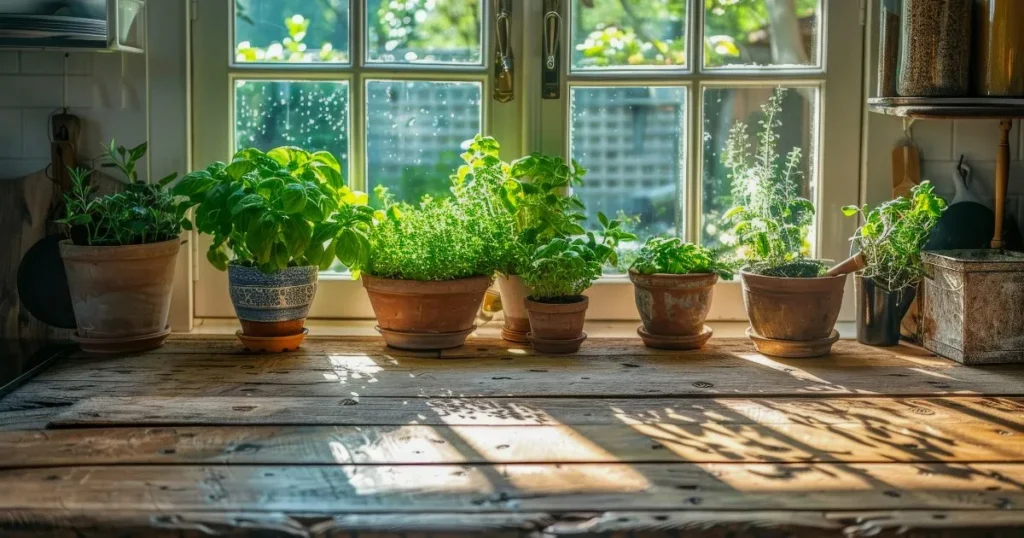
How to Plant Herbs in Pots
Preparing the Pot
Before planting your herbs in pots, prepare the pot with the following steps:
- Ensure good drainage: As mentioned, drainage holes are vital. If your pot doesn’t have drainage, you can drill some holes or use a different container.
- Add a layer of stones or gravel: This will help ensure the soil drains properly and doesn’t become compacted.
- Choose the right soil: For most herbs, a well-draining, high-quality potting mix is ideal. Avoid using garden soil, which can be too heavy and retain too much moisture.
Planting the Herbs
When planting herbs in pots, follow these steps:
- Fill the pot with soil, leaving enough space at the top for watering.
- Dig a small hole for the herb and place it gently into the pot.
- Fill the remaining space around the herb with more soil, pressing it down lightly to secure the plant.
- Water the herb thoroughly after planting.
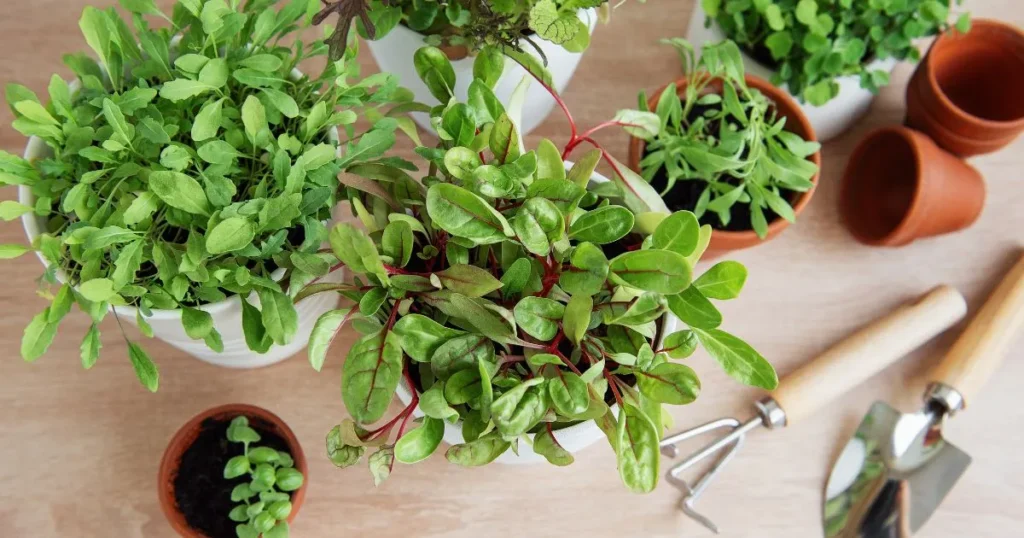
Caring for Herbs in a Pot
Watering and Fertilizing
Herbs in pots generally need regular watering, but overwatering can be detrimental. Here’s how to water and fertilize properly:
- Watering: Water the herbs when the top inch of soil feels dry. Ensure the water drains well, so the roots don’t sit in excess moisture.
- Fertilizing: Herbs in pots should be fertilized once a month during the growing season with a balanced, water-soluble fertilizer.
Pruning and Harvesting
To encourage healthy growth and prevent the plants from becoming leggy, regular pruning is essential. Use sharp scissors or pruning shears to remove dead or damaged leaves. Additionally, pinch back the tops of herbs like basil to encourage bushier growth.
When harvesting, be sure to pick the leaves regularly to keep the plant producing fresh growth. Avoid cutting more than one-third of the plant at a time to ensure it can continue growing.
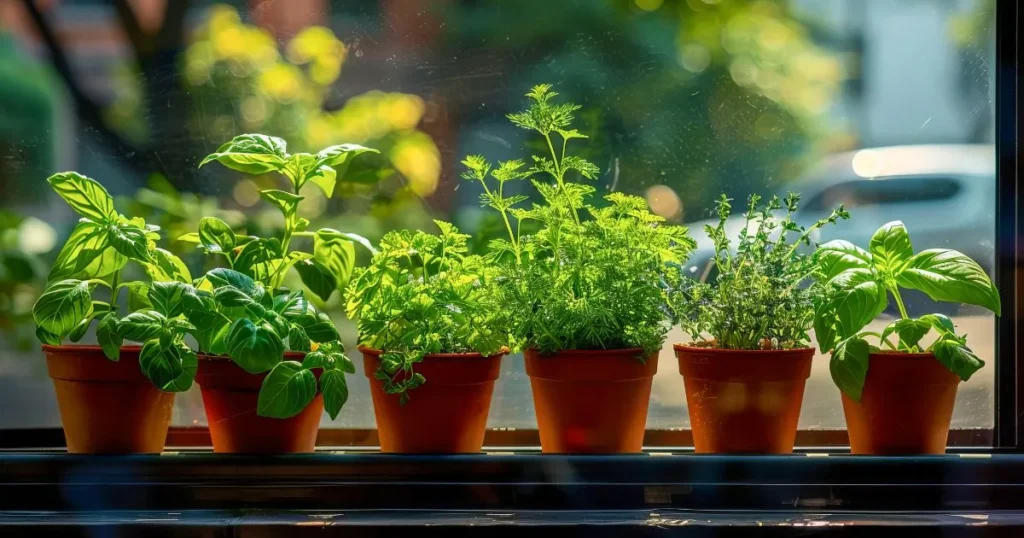
Common Problems with Herbs in a Pot
Pests and Diseases
Herbs in pots are prone to some common pests and diseases, including aphids, spider mites, and powdery mildew. To prevent pests:
- Inspect your herbs regularly for signs of damage.
- Use natural remedies, such as neem oil, to treat pest infestations.
Soil Issues
Over time, the soil in pots can become compacted or depleted of nutrients. If you notice poor growth, it may be time to repot your herbs in fresh soil. Additionally, always check the drainage to avoid waterlogged roots.
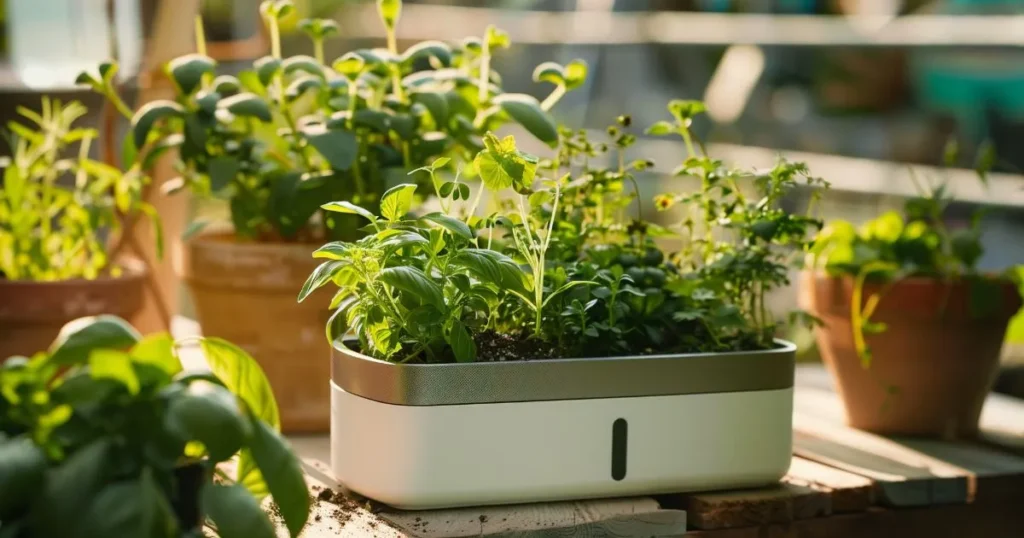
Herbs in a Pot: Seasonal Care and Considerations
Winter Care for Potted Herbs
In cold climates, it’s essential to bring your potted herbs inside during the winter. Place them near a sunny window and reduce watering since plants will grow more slowly in cooler temperatures. You can also insulate the pots with burlap or other materials to keep the roots protected from freezing.
Summer Care for Potted Herbs
During the summer, potted herbs may need extra attention, especially when the weather is hot. Ensure your herbs receive adequate sunlight and water regularly. You may need to move them to a spot with partial shade if the sun becomes too intense.
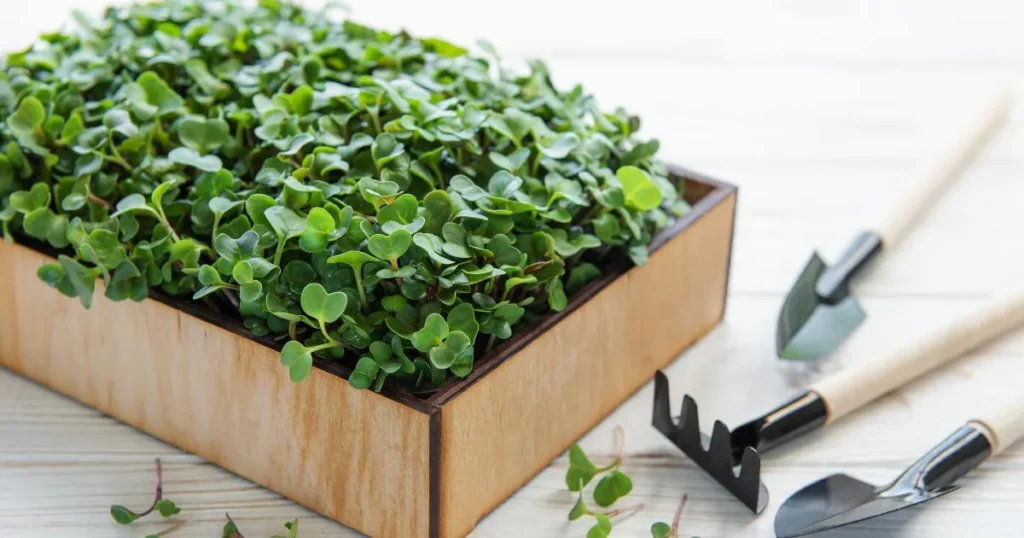
Conclusion: The Joy and Simplicity of Herbs in a Pot
Herbs in a pot offer an accessible, low-maintenance, and rewarding way to grow your own fresh ingredients. With the right selection of herbs, proper care, and a little attention, you can enjoy a steady supply of culinary and medicinal plants year-round. Whether you’re growing basil for pesto, lavender for relaxation, or mint for refreshing drinks, herbs in a pot can enhance both your cooking and your well-being.
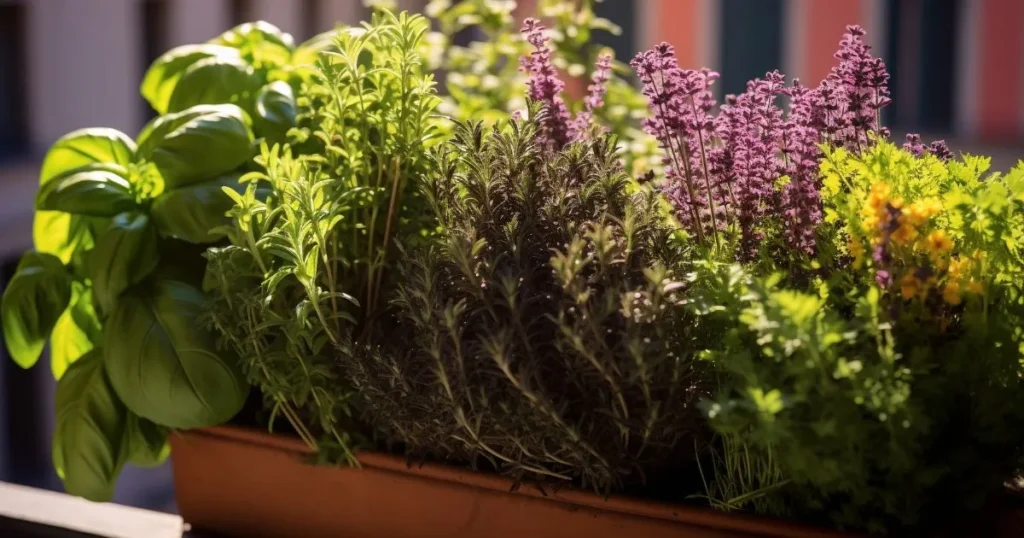
FAQs About Growing Herbs in a Pot
Q: Can I grow all herbs in pots? A: Most herbs can thrive in pots, but some, like rosemary and thyme, prefer a well-draining soil mix and ample sunlight.
Q: How much sunlight do herbs need in a pot? A: Most herbs require at least 4-6 hours of sunlight per day. However, some herbs, like mint, can tolerate partial shade.
Q: How often should I water herbs in pots? A: Water your herbs when the top inch of soil feels dry, but avoid overwatering. Ensure the pot has proper drainage to prevent waterlogging.
Q: Can I grow herbs indoors in a pot? A: Yes, many herbs, such as basil, thyme, and parsley, can be successfully grown indoors near a sunny window.
Q: Do I need to fertilize herbs in a pot? A: Yes, herbs in pots should be fertilized about once a month with a balanced, water-soluble fertilizer to promote healthy growth.

